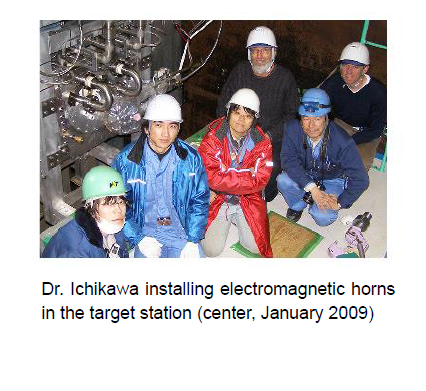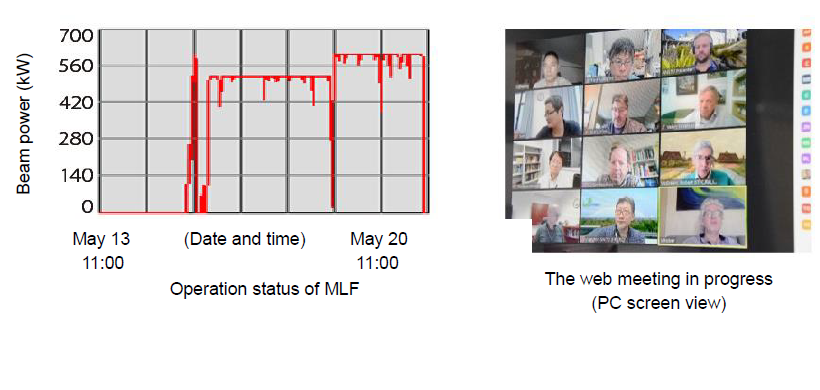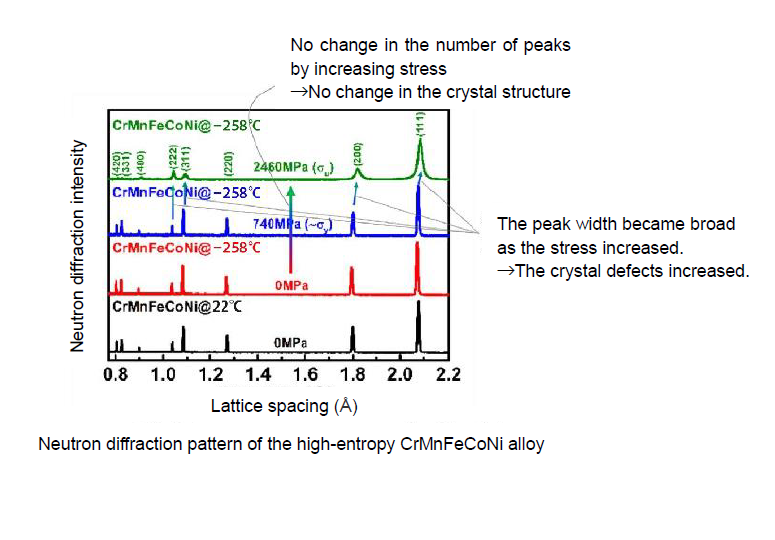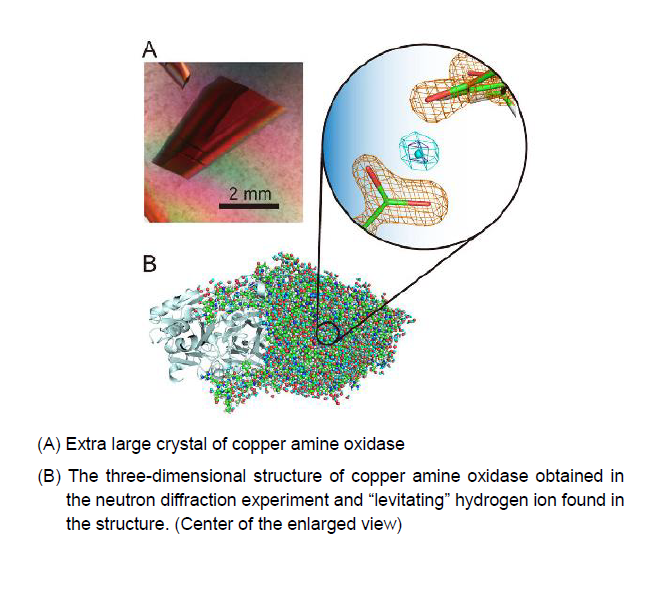J-PARC News May 2020 (Issue #181)
■ Associate Professor Atsuko Ichikawa of Kyoto University Won the Saruhashi Prize for Achievements in Neutrino Research (May 23)
On May 23, Atsuko Ichikawa (Kyoto University Associate Professor, former assistant professor and present visiting associate professor of KEK) received the 40th Saruhashi Prize from the Association for the Bright Future of Women Scientists (founded in 1980). This prize is given to a female scientist who had outstanding research achievements in the field of natural science. Dr. Ichikawa was recognized for her achievements in the T2K experiment, which has been conducted at J PARC in Tokai Village and Super Kamiokande (SK) in Kamioka cho, Hida City, Gifu Prefecture. In the present universe, only matter remains and there are no antimatter. It is considered that this is because there is a difference in properties between matter and antimatter (CP violation). The T2K experiment involves about 500 researchers from 12 countries who participate and is trying to decipher the matter and antimatter difference from the observation of neutrinos. Dr. Ichikawa is one of the delegates of this international collaboration.

■ The University of Toyama and the J PARC Center Signed a “Cooperative Agreement for Using the Experimental Facilities of the J PARC Center in Promotion of Materials and Life Sciences Research and Hydrogen Isotopes Research” (May 1)
On May 1, 2020, Toyama University and the J PARC Center concluded a cooperative agreement to promote their research cooperation using J PARC’s facilities. The agreement will allow both organizations to coordinate and cooperate to fully exploit their research and development resources, thus contributing to advance in their research and human resource development. Director Takayuki Abe of the Hydrogen Isotope Research Center, the Organization for Promotion of Research from Toyama University and Director Naohito Saito from the J PARC Center signed the cooperative agreement. Both organizations will build and promote close relationships to cooperatively conduct research, such as materials and life sciences and hydrogen isotope studies.
■ MLF Shifted to 600kW Operation on May 18
The Materials and Life Sciences Facility (MLF) suspended J PARC’s operation from April 20 due to the spread of COVID 19 infection. However, it has gradually resumed operation while taking comprehensive safety measures to prevent infection. Specifically, the facility began operation at 500kW on May 15 and shifted to 600kW on the18th. Later, it will be accepting users while taking account of the status of the local and national government’s travel restrictions. Also, on the 19th, in response to the spread of COVID 19 infection, a web conference was held with the directors of neutron facilities around the world. Fourteen people from nine countries attended the meeting, including Director Naohito Saito and Materials and Life Science Division Director Toshiya Otomo from J PARC. The participants reported on the status of each facility in response to the pandemic and research in relation to COVID 19, and discussed future international cooperation.

■ Elucidating the Mechanism of Unique Deformation at Ultra Low Temperatures of an Advanced Alloy; Accelerating the Development of Low temperature Structural Materials with High performance for Applications Such as Space Technology Development (March 26, Press Release)
Materials with excellent properties at low temperatures are useful in various fields, such as space technology development. Unlike ordinary metal materials, a high entropy alloy, which is a mixture of many metal elements in equal amounts, shows a large elongation at ultra low temperatures. Professor Xun Li Wang of the City University of Hong Kong and his colleagues challenged to understand the mechanism of this phenomenon using neutron diffraction experiments. They used TAKUMI, the engineering materials diffractometer of J PARC, to perform an in situ neutron diffraction experiment during tensile deformation of a high entropy CrMnFeCoNi alloy at ultra low temperature. The obtained diffraction patterns are shown in the figure below. When the external stress applied on the sample increased in the order of red → blue → green, no diffraction peak disappeared nor new diffraction peaks appeared. This meant that the crystal structure (atomic arrangement) of the sample did not change during cooling and deformation. In many other metal materials, large elongations at low temperature are commonly accompanied with the change in the crystal structures. In this sample, a different mechanism obviously took place. Meanwhile, the peak width became broad as the stress increased, showing the introduction of crystal defects (irregularities in the atomic arrangement) by deformation. After a detailed examination of the positions, widths, and intensities of the diffraction peaks, the researchers discovered that the extremely large elongation at ultra low temperatures in this sample was caused by the introduction, accumulation, and movement of multiple types of crystal defects, and their interactions which occurred in stages as deformation progressed. This achievement is expected to accelerate the future development of excellent low temperature materials with higher strength and ductility.

■ Shedding Light on the Unsolved Question in Physics! Visualizing the flow in superfluid helium (April 10, Press Release)
A phenomenon called “superfluidity” occurs due to the quantum mechanical effect of helium (He) atoms. In this phenomenon, the fluidity increases at extremely low temperatures and causes turbulence in the superfluid state, which is called quantum turbulence. This turbulence is assumed to be more manageable than normal turbulence. For example, because of its quantum mechanical properties, the vortex has the smallest unit, which can be counted one by one. This study is expected to lead to an understanding of normal turbulence; hence, visualization of the flow of superfluid helium is useful. In the method that uses conventional particles as tracers, the particles disrupt the movement of the vortex because they are larger than the smallest unit of the vortices in quantum turbulence, making it impossible to accurately interpret the flow of superfluid helium itself. Therefore, He2 excimer, a candidate tracer, was given great attention. Helium is usually present as a monoatomic molecule, but when it is excited by external stimulation, it becomes a diatomic He2 excimer molecule. It is important to note that the He2 excimer can be formed by irradiation of a high intensity neutron beam.
Assistant Professor Volker Sonnenschein of Nagoya University and his colleagues have developed a portable device that induces and measures the fluorescence of He2 excimers and succeeded in observing excimers produced by irradiating neutron beams on superfluid helium at J PARC's neutron beamline Raden. It was the first step toward the visualization of the flow in superfluid helium. If the quantum turbulence mechanism can be elucidated through full scale visualization research in the future, it can be applied to general turbulence research such as water and air turbulence. Moreover, it may be applied to various other fields, including cooling industrial products, designing airplanes, and improving the accuracy of weather forecasts.
■ Hydrogen ions levitating in space?! A Unique World Shown by Neutron Crystal Structure Analysis of Extra Large Proteins (April 28, Press Release)
Enzymes are proteins that catalyze chemical reactions that occur in living organisms. To understand the function of enzymes, it is important to accurately determine the three dimensional structure of the molecule at the atomic and electron level and elucidate the reaction mechanism based on the structure. Neutron crystal structure analysis can accurately determine the positions of all constituent atoms, including hydrogen atoms, which play a central role in the enzymatic reaction. Nevertheless, this requires extremely large protein crystals, and it is generally difficult to increase the size of crystals for proteins with large molecular weights. That is why mainly small proteins have been used for measurement and analysis. This time, a group formed by Osaka Medical College and Osaka University succeeded in producing a high quality large crystal of copper amine oxidase, which is also involved in the development of diabetes. The protein has an extra large molecular weight of 70,600, an unprecedented size for neutron crystallography. The group performed a neutron diffraction experiment using the neutron beamline iBIX in Ibaraki Prefecture installed at J PARC and achieved an extremely high resolution for crystal structure analysis of the extra large proteins. In addition, the group discovered that at the site where the chemical reaction takes place in the enzyme (active site), hydrogen ions form hydrogen bonds with all the surrounding oxygen atoms in three directions. They are located at a distance away from covalent bonds (delocalized); thus existing in a "levitating" state. This result is essential for understanding the reaction mechanism of the enzyme, and also provides important knowledge for further understanding about the quantum behavior of the enzyme. Thus, this new knowledge will help expand the application of neutron crystal structure analysis to high molecular weight proteins to a greater extent. In addition, J PARC’s neutron beams have proved its potential to contribute to research on the functions and mechanisms of proteins, which may bring valuable knowledge leading to new drug development in the coming years.

